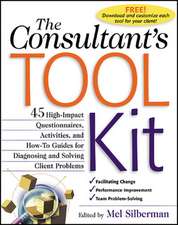The Future of Management Education: Volume 1: Challenges facing Business Schools around the World
Editat de Stéphanie Dameron, Thomas Duranden Limba Engleză Paperback – 13 noi 2020
The two volumes cover the context of Business Schools in ten countries and grapples with the challenges they currently face. They specifically discuss foresight scenarios and strategic implications for stakeholders (Deans, faculty, students, prospective students, alumni, local businesses, corporations, government, accreditation bodies).
| Toate formatele și edițiile | Preț | Express |
|---|---|---|
| Paperback (1) | 700.61 lei 6-8 săpt. | |
| Palgrave Macmillan UK – 13 noi 2020 | 700.61 lei 6-8 săpt. | |
| Hardback (2) | 734.27 lei 6-8 săpt. | |
| Palgrave Macmillan UK – 9 feb 2017 | 734.27 lei 6-8 săpt. | |
| Palgrave Macmillan UK – 18 dec 2017 | 785.11 lei 6-8 săpt. |
Preț: 700.61 lei
Preț vechi: 824.25 lei
-15% Nou
Puncte Express: 1051
Preț estimativ în valută:
134.07€ • 138.52$ • 111.53£
134.07€ • 138.52$ • 111.53£
Carte tipărită la comandă
Livrare economică 19 martie-02 aprilie
Preluare comenzi: 021 569.72.76
Specificații
ISBN-13: 9781349851126
ISBN-10: 1349851124
Pagini: 415
Ilustrații: XXI, 415 p. 44 illus.
Dimensiuni: 148 x 210 mm
Greutate: 0.52 kg
Ediția:1st ed. 2017
Editura: Palgrave Macmillan UK
Colecția Palgrave Macmillan
Locul publicării:London, United Kingdom
ISBN-10: 1349851124
Pagini: 415
Ilustrații: XXI, 415 p. 44 illus.
Dimensiuni: 148 x 210 mm
Greutate: 0.52 kg
Ediția:1st ed. 2017
Editura: Palgrave Macmillan UK
Colecția Palgrave Macmillan
Locul publicării:London, United Kingdom
Cuprins
Chapter 1 Trends and Challenges in Management Education around the world.- Chapter 2 Higher education in business administration – The case of the United States.- Chapter 3 Higher education in business administration – The case of Germany.- Chapter 4 Higher Education in Business Administration: The Case of Australia.- Chapter 5 Higher Education in Business Administration: The Case of Spain.- Chapter 6 Business Education in Israel.- Chapter 7 Business and Management Education: the Case of the UK.- Chapter 8 South African Business Schools: A Brief Overview.- Chapter 9 Higher Education in Business Administration: The case of Poland.- Chapter 10 Business Education and Business Schools in Canada.- Chapter 11 Higher Education in Business Administration: The case of Portugal.- Chapter 12 Higher education in business administration: The case of Sweden.- Chapter 13 Higher education in business administration: The case of Italy.
Notă biografică
Stéphanie Dameron is Professor of Strategic Management at Paris Dauphine University, France, where she runs the Chair “Strategy and Competitive Intelligence”. She has been a Board member of Paris Dauphine University since 2012 and a member of the Supervisory Board of the ESSEC business school since 2016. Professor Dameron is the former chair of the French Academy of Management (2012-2014) and previously held the positions of Associate Editor of the British Journal of Management (2011-2015) and Associate Editor of the European Management Review in 2014. She was elected as Program chair of the Strategic Management Society’s Strategy Practice Interest Group in 2014.
Thomas Durand is Professor and Chair of Strategic Management at Cnam Paris, France. Professor Durand is a Fellow of the European Academy of Management (Euram), founding member of the European Institute for Technology and Innovation Management (EITIM), former president of both the International Association of Strategic management (AIMS) and the French Society of Management (SFM). He has published extensively in business strategy and innovation management. He was at Centrale Paris for 30 years and taught at HEC, INSEAD, Dauphine, the Stockholm School of Economics or Chalmers. He has an extensive experience in executive education.
They jointly co-authored and co-edited The Future of Business Schools: Scenarios and Strategies for 2020 (Palgrave Macmillan, 2008).
Thomas Durand is Professor and Chair of Strategic Management at Cnam Paris, France. Professor Durand is a Fellow of the European Academy of Management (Euram), founding member of the European Institute for Technology and Innovation Management (EITIM), former president of both the International Association of Strategic management (AIMS) and the French Society of Management (SFM). He has published extensively in business strategy and innovation management. He was at Centrale Paris for 30 years and taught at HEC, INSEAD, Dauphine, the Stockholm School of Economics or Chalmers. He has an extensive experience in executive education.
They jointly co-authored and co-edited The Future of Business Schools: Scenarios and Strategies for 2020 (Palgrave Macmillan, 2008).
Textul de pe ultima copertă
This book discusses the new challenges facing Business Schools around the world with potential scenarios that may be envisioned for 2030 and strategies for stakeholders. Based on documented descriptions of competitive dynamics in the ‘business’ of business schools in a variety of countries, the authors highlight the fact that the ‘industry’ of management education is going through major changes such as new governance and business models, mergers and acquisitions, internationalization of faculty and students coexisting with entrenchment in local markets, ever more needs for financial resources, development of distant and blended learning, and increasing pressure for research output to boost rankings. With concerns surrounding the sustainability of current trends in faculty salary inflation, social acceptability of higher fees, cost of distance learning and the risk of an academic-industry divide around knowledge produced by management research, The Future of Management Education develops an analysis of business models and institution regulation.
The two volumes cover the context of Business Schools in ten countries and grapples with the challenges they currently face. They specifically discuss foresight scenarios and strategic implications for stakeholders (Deans, faculty, students, prospective students, alumni, local businesses, corporations, government, accreditation bodies).
The two volumes cover the context of Business Schools in ten countries and grapples with the challenges they currently face. They specifically discuss foresight scenarios and strategic implications for stakeholders (Deans, faculty, students, prospective students, alumni, local businesses, corporations, government, accreditation bodies).
Caracteristici
Provides solutions and strategies for stakeholders for 2030 Includes perspectives from business schools around the globe Presents an analysis of business models applicable to education














